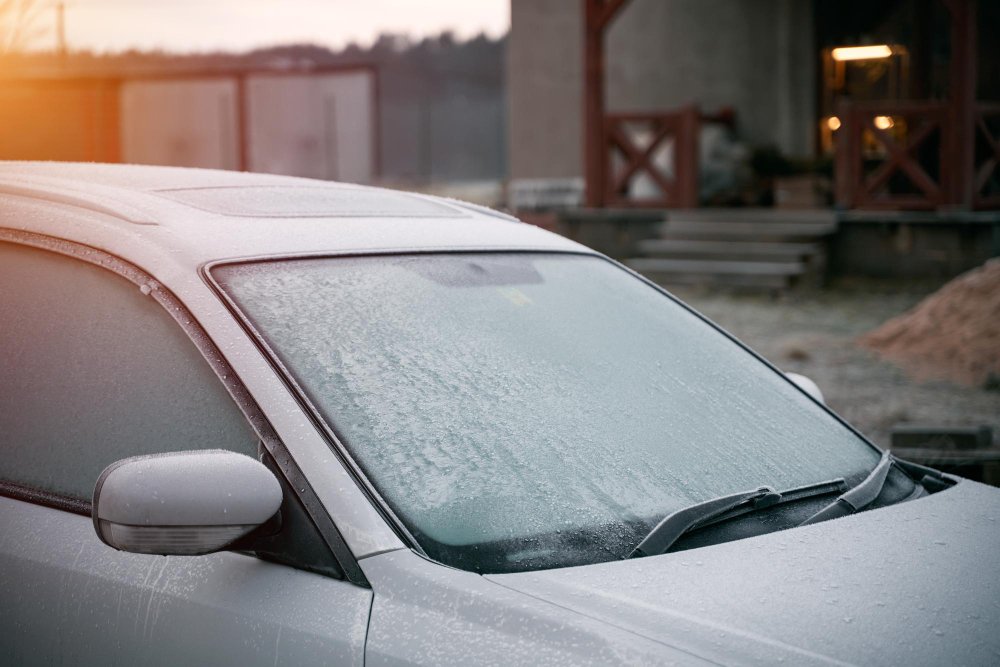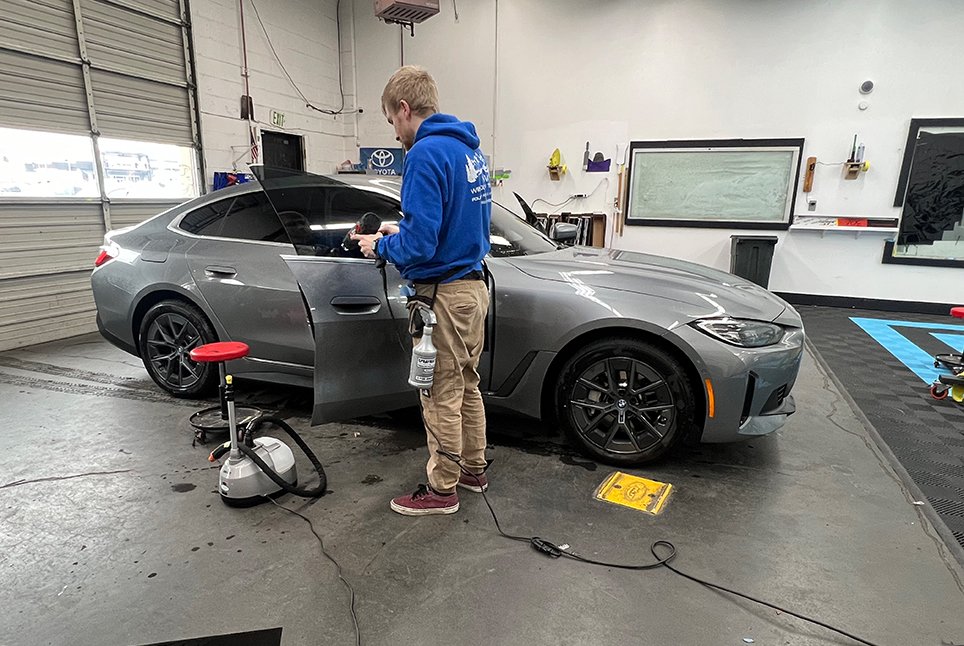Why Automobile Window Tinting is a Must-Have for Modern Automobiles
Why Automobile Window Tinting is a Must-Have for Modern Automobiles
Blog Article
Home Window Tinting Rules and Standards: What You Required to Know Before Tinting Your Cars And Truck
Prior to continuing with window tinting for your automobile, it is vital to familiarize yourself with the diverse laws and guidelines that control this technique throughout different states. These policies determine the allowable levels of color darkness, often measured by visible light transmission (VLT) portions, and consist of details stipulations for front windscreens aimed at making certain roadway safety and security.
Overview of Window Tinting Regulations
Window tinting regulations are regularly based on variation across different territories, showing local laws and security considerations. These legislations dictate the allowable levels of color darkness and reflectiveness on car windows, making certain that motorists preserve sufficient exposure while also safeguarding against hazardous UV rays and warm.
The majority of laws categorize home window tinting based upon the Visible Light Transmission (VLT) percentage, which shows the amount of light that can travel through the window. Usually, reduced VLT percentages indicate darker tints. Regulations typically distinguish between the front, side, and rear windows, with stricter limitations related to the front windshield to boost security for both the chauffeur and other roadway customers.
Compliance with window tinting regulations is vital, as infractions can result in fines, compulsory elimination of the tint, and possible increases in insurance coverage premiums. It is essential for automobile owners to acquaint themselves with local legislations prior to proceeding with home window tinting setups.
State-by-State Tint Regulations
Understanding the specific home window tinting guidelines in each state is essential for car owners looking for to follow the legislation. Each state in the U.S. has actually established its very own set of regulations regulating home window tinting, which can differ substantially. These regulations often determine the allowed degrees of tint darkness, the types of windows that can be tinted, and any clinical exceptions that might use.
For circumstances, states like California have rigorous limitations on color darkness for front home windows, while others, such as New Mexico, might enable darker tints. Additionally, specific states mandate particular visibility percentages for various windows, consisting of the windscreen, front side windows, and back home windows. It is critical for car proprietors to acquaint themselves with their state's legislations to stay clear of possible penalties or charges.
Additionally, some states might call for a certification sticker label to be put on tinted home windows, suggesting conformity with state regulations. Failing to abide by these regulations not just runs the risk of legal repercussions however can additionally impact security and visibility while driving. For that reason, car owners must carry out complete research study or speak with local authorities to make certain complete understanding and compliance with state-by-state tint laws.
Allowed Tint Levels and Kinds
Lots of automobile owners might be surprised to find out that permitted tint levels and types differ extensively across various states. Each state has established its very own policies pertaining to the allowable darkness and reflectivity of window tint, often measured by Visible Light Transmission (VLT) portions. VLT refers to the quantity of light that can pass with the colored windows; hence, a lower percent indicates a darker color.

Additionally, the sorts of tint materials permitted can vary, with some states prohibiting mirror-like or metallic finishes. It is vital for vehicle owners to familiarize themselves with their state's details laws to make certain compliance. Non-compliance can lead to penalties, required removal of the color, or various other legal effects, making it imperative to understand these policies prior to waging setup.
Medical Exemptions for Tinting
While not all states supply allocations for clinical exceptions pertaining to home window tinting, those that do identify the necessity for certain individuals to enhance visibility and comfort as a result of clinical conditions. Various medical problems, such as lupus, skin cancer, and certain eye problems, can provide people especially delicate to sunshine. Consequently, these people may require darker tints to safeguard themselves from dangerous UV rays and glow.

It is essential to note that despite having a clinical exemption, there might still be restrictions on the degree of color enabled. Conformity with state laws makes certain that people are both secured and within lawful limitations. Those considering medical exemptions must call their local Department of Electric motor Autos or equivalent authority to comprehend the requirements and treatments needed to make an application for an exception properly.
Fines for Non-Compliance
Falling short to adhere to window tinting laws can lead to substantial charges, which learn the facts here now differ by state. Police are encouraged to release citations for vehicles that do not comply with the defined tinting policies. These fines usually consist of penalties, which can range from moderate total up to several hundred dollars, depending on the seriousness of the violation and the state in concern.
In some jurisdictions, duplicated offenses may result in escalating fines or additional penalties, such as compulsory court appearances. Furthermore, non-compliance may require the elimination of prohibited tinting, often at the owner's expense. In severe situations, habitual offenders might face suspension of their car enrollment till conformity is attained.
Additionally, insurance policy ramifications might emerge from getting numerous citations for home window tint infractions. Insurance providers may watch such violations as an indicator my response of riskier actions, possibly resulting in boosted premiums or problem in protection.
To avoid these charges, it is important for car proprietors to acquaint themselves with their local home window tinting regulations and guarantee that their vehicle complies (Window Tinting). This proactive approach not just stays clear of lawful ramifications yet also advertises road safety and security
Final Thought

The majority of guidelines categorize home window tinting based on the Visible Light Transmission (VLT) portion, which shows the quantity of light that can pass with the home window. Conformity with window tinting guidelines is crucial, as infractions can result in penalties, compulsory elimination of the color, and potential boosts in insurance coverage premiums.Recognizing the details home window tinting regulations in each state is important for car proprietors looking for to abide with the law. These guidelines often dictate the permitted levels of tint darkness, the types of windows that can be tinted, and any medical exemptions that might apply.
For instance, states like The golden state have stringent constraints on color darkness for front home windows, while others, such as New Mexico, may enable darker tints.
Report this page